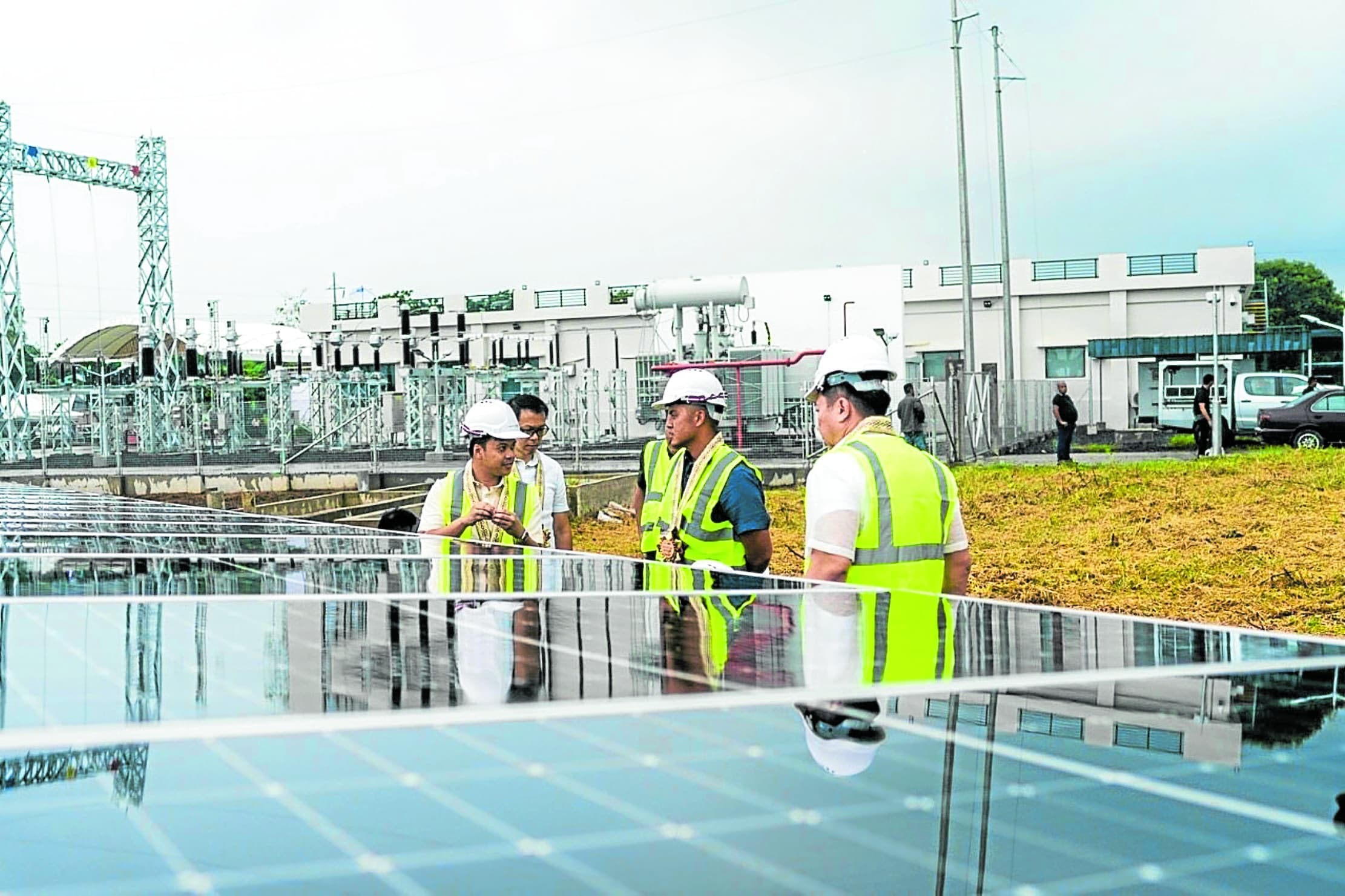
SUN-KISSED In Calabanga town, a 74.1-megawatt solar farm in Barangay Bonot Sta. Rosa is already operational, contributing to green energy and generating income for the local government.—Contributed photo
LEGAZPI CITY, ALBAY, Philippines — The province of Camarines Sur is taking a significant step toward a sustainable, resilient future by embracing various forms of renewable energy.
According to Rep. Luis Raymund Villafuerte, the realization of renewable energy projects does not only ensure clean energy for households but would also stimulate the local economy, promote ecotourism, and position the Philippines as a leader in renewable energy.
“It will generate billions in investments, create thousands of jobs, and produce hundreds of millions in revenue. The land value around these areas will increase, benefiting landowners, and the government will earn more from the higher zonal valuation,” Villafuerte told the Inquirer in a phone interview on Monday.
READ: World’s biggest solar farm to get budget boost
In Calabanga town, a 74.1-megawatt (MW) solar farm in Barangay Bonot Sta. Rosa is already operational, contributing to green energy and generating income for the local government, Mayor Eugene Norman Severo said in a separate phone interview on Monday.
“We aim to be recognized as the first green municipality in the country by establishing renewable energy projects,” Severo said.
He added that projects like this will improve the condition of the ecosystem endangered by harmful gas emissions and help in mitigating the effects of climate change.
Wind energy
“Very soon, we will convert the municipality to solar energy, similar to what we are implementing in our disaster risk reduction office. This is significant during calamities, especially when power outages occur,” he said.
Aside from solar power, a 1,000-MW offshore wind energy project in San Miguel Bay is set to start by 2025.
Severo explained that the project will materialize through a partnership between the local government unit, the provincial government, and the Danish infrastructure firm Copenhagen Infrastructure Partners.
“A series of studies and consultations has been conducted, and the community has warmly welcomed the project,” he said.
He assured that once the project is operational, it will not affect the 2,000 fishermen in the area.
“The vibrations from wind energy will not endanger the marine sanctuary. Protecting the marine environment remains our major concern,” he stressed.
Villafuerte emphasized that investing in renewable energy projects is a win-win situation where the government earns revenue, and the people benefit from the creation of more jobs and livelihoods.
“The (construction of the) Aboitiz Power 90-MW wind project is already ongoing and will be completed next year. Many more renewable projects are on the way,” he added.
Sustainability leader
Villafuerte said that they aim to make Camarines Sur a renewable energy hub, which would attract more investments and foster sustained economic activity.
“One good thing is that once all are fully operational, there will be no more power outages, and we will not only supply the whole province but definitely the neighboring provinces because of the surplus,” he added.
He highlighted that these projects would place Camarines Sur on the map, not just as a province rich in culture but also as a leader in environmental sustainability.
While the wind turbines will primarily serve as a clean energy source, they also have the potential to become a tourist attraction, Villafuerte said.
“San Miguel Bay is a breathtaking destination, and with the wind turbines in place, visiting the area will offer something entirely unique and memorable,” Villafuerte said.
According to 2020 census, Camarines Sur, which includes the cities of Naga and Iriga, has a population of 2,068,244. It is Bicol’s largest province in population and land area (2,122.42 square miles or 5,497.03 square kilometers).
The province is primarily engaged in agriculture, producing rice, corn, feedmeal, freshwater fish, livestock, coconut, sugar, abacá, and water lily.